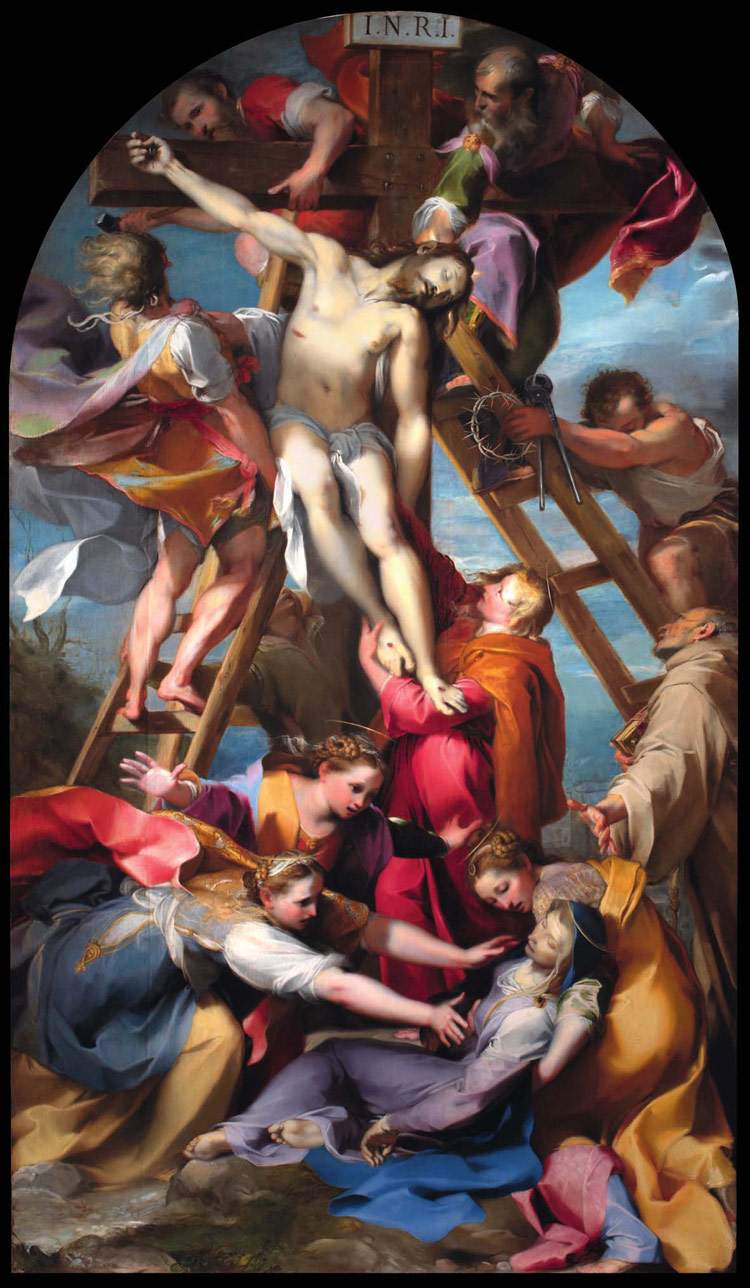From Michelangelo to Caravaggio, the Eternal and Time exhibition in Forli.
The exhibition L’Eterno e il tempo tra Michelangelo e Caravaggio (Eternity and Time between Michelangelo and Caravaggio), the new exhibition of the San Domenico Museums in Forlì, is scheduled from Feb. 10 to June 17, 2018, and is set up for the first time in the spaces of the convent church of San Giacomo Apostolo, which has been fully recovered and adapted as a new exhibition venue. The exhibition aims to document one of the most tormented yet important periods in art history, those from the Sack of Rome (1527) to the disappearance of Caravaggio (1610). In between, the beginning of the Protestant Reformation (1517-1520), Michelangelo ’s Last Judgment (1536-1541), the Council of Trent (1545-1563) and the publication of Galileo Galilei’s Sidereus Nuncius (1610), foundational events for the onset of modernity.
The exhibition, curated by Gianfranco Brunelli, thus ranges from the last Michelangelo to the works of Caravaggio, presenting masterpieces by the greatest masters of the time: In Forlì it is possible to see works by Raphael, Correggio, Titian, Domenico Beccafumi, Pontormo, Rosso Fiorentino, Lorenzo Lotto, Sebastiano del Piombo, Bronzino, Giorgio Vasari, Daniele da Volterra, and Veronese, all the way to the late 16th and 17th centuries with El Greco, Federico Barocci, the Carraccis, Federico Zuccari, Guido Reni, and Pieter Paul Rubens. Among the works, the public will admire masterpieces such as Caravaggio’s Madonna of the Pilgrims and Child Bitten by a Lizard, the Pietà of Capodimonte by Annibale Carracci, Federico Barocci’s Deposition, Michelangelo’s Christ Giustiniani, Correggio’s Lamentation over the Dead Christ, Ludovico Carracci’s The Conversion of Saul, Giorgio Vasari’s Deposition, Daniele da Volterra’s Prophet Elijah in the Desert, Lorenzo Lotto’s Saint Christopher, and Rosso Fiorentino’s The Marriage of the Virgin.
“To be protagonists at the San Domenico,” the presentation reads, “will be the drama and fascination of a century that saw the disturbing pangs of a superb sunset, that of the Renaissance, coexisting with the progress of a new and luministic horizon, with great masterpieces of Mannerism. While the demand on the Church of Rome for greater spiritual rigor produced a renewed defense of sacred images (especially by the Ignatian Society of Jesus), it also imposed a different focus on the composition and depiction of images, as well as a redefinition of sacred space and its ornamentation. New schools and orientations thus developed. From the attempt to give life to ”a timeless art“ of Valerian and Pulzone, in the Roman milieu, to the outcomes of Titian’s chromatic modeling, to the naturalism of the Carracci, with their ”affectionate Lombard stamp,“ as Longhi calls it.”
“The objective of the exhibition,” explains curator Gianfranco Brunelli, “is the investigation of the transformation of the values of the arts in the age of the Reforms of the sixteenth century. It is therefore necessary to retrace the vision that contemporaries had of that historical moment, what was their way of looking at the present and the artistic past, and, to follow, what were the subsequent critical interpretations.” “No period, and precisely in the comparison of its highest values,” he continues, “presents such a variety of aspects, corresponding to a substantial disparity of spiritual situations, ideal directions, aesthetic, philosophical and scientific orientations. Violent period (of wars, revolts, repressions, religious conflicts), which crossed and divided Europe. Period of disorder and at the same time of hoped-for return to order: it will suffice to mention the six books of Bodin’s Republic, which critically rereading Macchiavelli theorize the absolute state as the sole repository of the principle of sovereignty, or to put in mind the nascent Accademia della Crusca, which sought to bring order to language. The renewal of art and its reception were decisive in determining the emerging critical consciousness, and with it that new idea of history and nature that we call modernity.”
The review will also be an important opportunity to help others, because the Fondazione Cassa dei Risparmi di Forlì, the event’s organizer, has decided to donate a portion of the ticket sales to the fundraiser that Mediafriends dedicates to supporting children. “We wanted to combine the beauty of a prestigious art exhibition with safeguarding the future of the youngest children,” the organization explains, “knowing that an important event such as the Forlì exhibition has all the qualities to raise awareness not only on a cultural theme of undoubted value but also on that of social solidarity.”
L’Eterno e il tempo tra Michelangelo e Caravaggio opens daily (except Mondays, closing day) from 9:30 a.m. to 7 p.m. Saturdays, Sundays and holidays from 9:30 a.m. to 8 p.m. The ticket office closes one hour earlier. Special openings on April 2, 23 and 30. Tickets: full 12 euros, reduced 10 euros (groups of more than 15 people, under 18 and over 65, concessionary, university students, visitors with a ticket for the exhibition I Carracci tra natura e storia), reduced schools 5 euros (for primary and secondary schools and for children aged 6 to 14), special open ticket 13 euros (to visit the exhibition without dates and time slots, or to give away), family ticket 25 euros (two adults and two children under 14). Free for children under 6, one accompanying person per group, disabled with accompanying person, two accompanying persons per school group, journalists with card, tour guides with card. Ticket includes audioguide (special version for children). Info at www.mostraeternoeiltempo.it/.
Image: Federico Barocci, Deposition (1567-1569; oil on canvas; Perugia, Cathedral)
 |
| From Michelangelo to Caravaggio, the Eternal and Time exhibition in Forli. |
Warning: the translation into English of the original Italian article was created using automatic tools. We undertake to review all articles, but we do not guarantee the total absence of inaccuracies in the translation due to the program. You can find the original by clicking on the ITA button. If you find any mistake,please contact us.




























